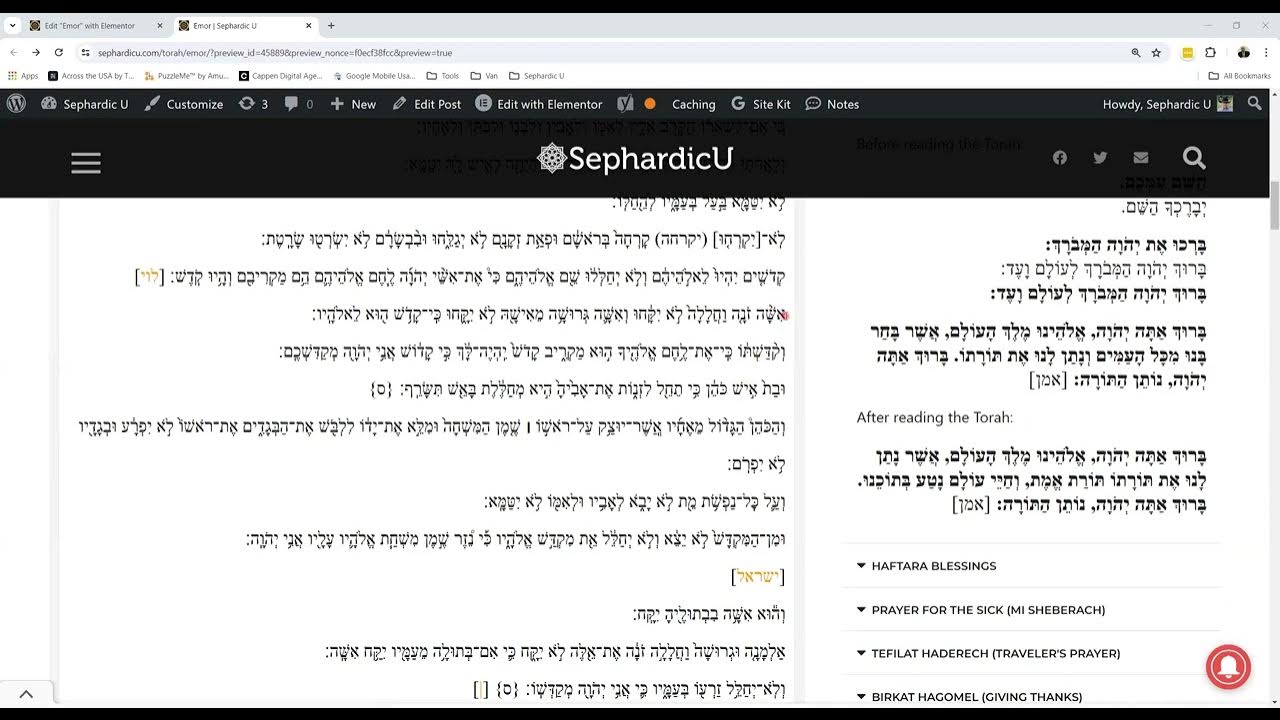The Sephardic Jewish experience is a remarkable journey that transcends time and space, encompassing a story of resilience, cultural fusion, and global impact. The Sephardic Diaspora, a phenomenon born from the crucible of persecution and expulsion, paints a vivid portrait of a people’s unwavering spirit in the face of adversity. In this exploration of the historical background of the Sephardic Diaspora, we delve deeper into the origins, destinations, and enduring legacy of this transformative chapter in Jewish history.
Exodus from Iberia: A Defining Moment
The Sephardic Diaspora finds its origins in the late 15th century, a period marred by the Alhambra Decree of 1492 in Spain and the subsequent Portuguese Expulsion of 1497. These draconian measures forced the Jewish population to make a heart-wrenching choice: convert to Christianity, leave their homeland, or face persecution. Faced with these dire options, many Sephardic Jews opted for exile, setting forth on a journey that would forever reshape the global Jewish landscape.
A Global Network of Destinations
The dispersion of Sephardic Jews was not a monolithic event but a complex web of journeys that led to the establishment of diverse communities across continents. This network of destinations was shaped by a combination of historical factors, including the tolerance of host countries, economic opportunities, and family connections.
Ottoman Empire: A Beacon of Tolerance
One of the most prominent destinations for Sephardic Jews was the Ottoman Empire, a realm known for its religious tolerance. Ottoman rulers welcomed the exiled Jews into their domains, offering refuge from the persecution they had endured. Cities like Istanbul, Salonica, and Izmir became thriving centers of Sephardic culture, where traditions were upheld, and new chapters of Jewish history were written.
North Africa: A Tapestry of Traditions
The shores of North Africa also welcomed Sephardic Jews, adding a rich layer to the region’s cultural fabric. Communities flourished in Morocco, Algeria, Tunisia, and Libya, where Sephardic customs interwove with existing North African traditions. The melding of culinary practices, music, and language not only enriched the local landscape but also testified to the adaptability and resilience of Sephardic Jews.
European Haven: Nurturing Sephardic Roots
Sephardic Jews found refuge and new beginnings in various European nations as well. France, the Netherlands, and England extended their embrace to these communities, contributing to the vibrant diversity of their respective societies. Beyond the European mainland, Sephardic influence extended as far as India, where Jews established themselves in Goa, and China, where a thriving community took root in Shanghai.
A New World: Sephardic Impact in the Americas
The Sephardic Diaspora also traversed the vast expanse of the Atlantic Ocean, leaving an indelible mark on the Americas. Communities formed in Brazil, Mexico, and the Caribbean, adding unique layers to the cultural mosaic of the New World. The legacy of Sephardic Jews is evident in the linguistic traces of Ladino, the melodies of traditional Sephardic music, and the persistence of cherished customs.
Cultural Resilience and Synthesis
What is particularly remarkable about the Sephardic Diaspora is the ability of these communities to maintain their core identity while adapting to new environments. While upholding distinct religious practices, language, and customs, Sephardic Jews also absorbed elements of their host cultures. This fusion gave rise to a cultural synthesis that continues to intrigue scholars and enthusiasts alike.
The Sephardic Legacy: Echoes of the Past, Inspiration for the Future
Beyond its historical significance, the Sephardic Diaspora carries enduring lessons. It epitomizes the human quest for freedom, identity, and the pursuit of a better life. The story of Sephardic Jews, expelled from their homeland and scattered to the winds, mirrors the universal journey of countless individuals seeking a place to call home.
A Cultural Kaleidoscope
The legacy of the Sephardic Diaspora has enriched the global cultural tapestry, offering a mosaic of traditions, languages, and influences. It underscores the importance of embracing diversity and recognizing the profound impact that minority communities can have on the world stage. Sephardic culture, which has woven itself into the very fabric of countless societies, serves as a testament to the resilience and contributions of a people who persevered against all odds.
The Bridge Between Eras
As we navigate the diverse and interconnected world of the Sephardic Diaspora, we not only uncover a historical narrative but also discover a bridge between eras. The journey of Sephardic Jews from the Iberian Peninsula to the far reaches of the globe serves as a poignant reminder of the enduring human spirit and the power of heritage to transcend time and space.
In the next section, we embark on a journey through Sephardic surnames and ancestral names, unlocking the stories they hold and the insights they offer into the lives of generations past.
Continue: Surnames and Ancestral Names: Unveiling Historical Connections








Parashat Behar – Weekday Torah Reading (Moroccan TeAmim)